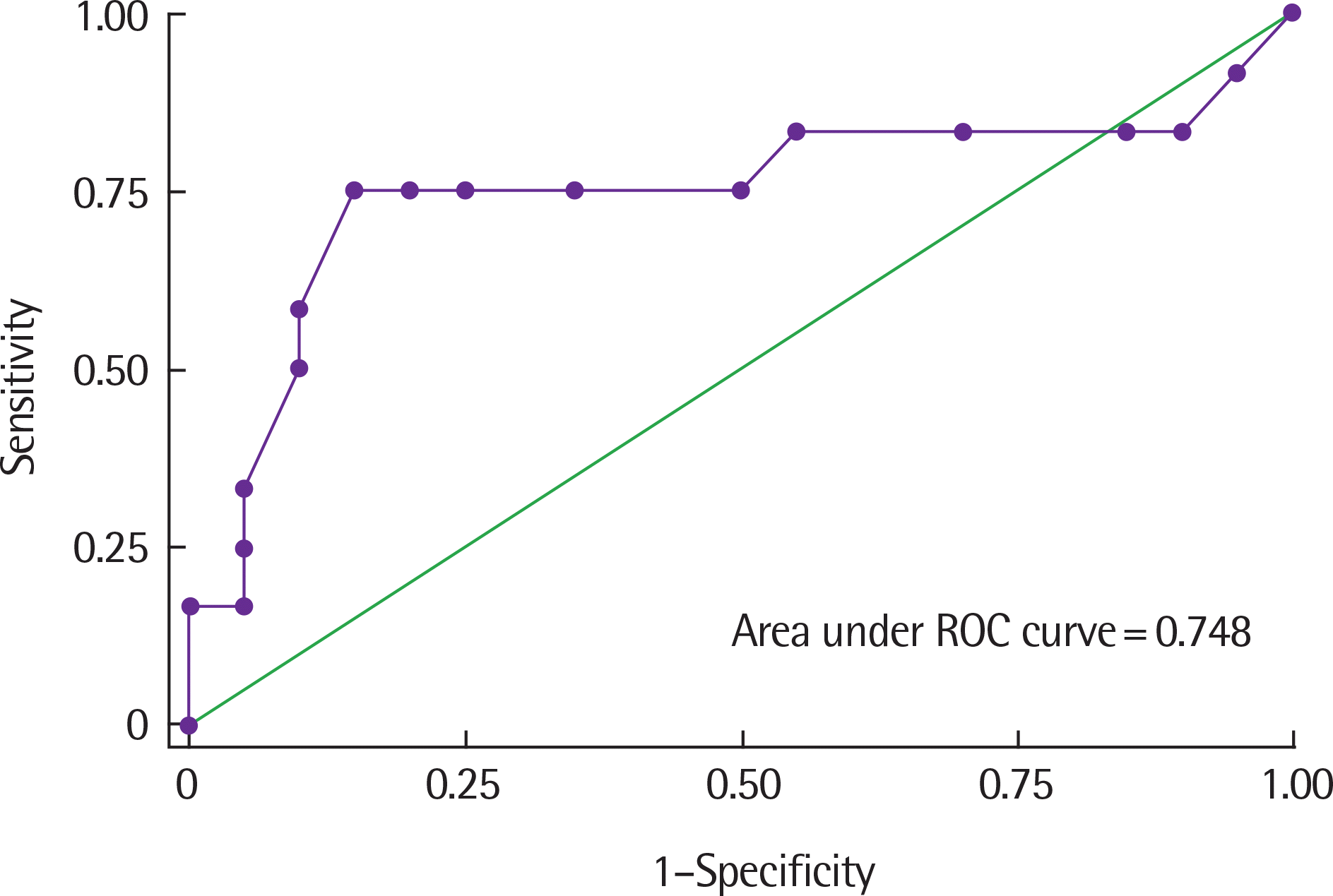Abstract
Purpose
Tuberculosis (TB) is a common and possibly fatal infectious disease, and its incidence and prevalence is quite high in Korea compared to other Organization for Economic Co-operation and Development countries. Patients who have active TB can cause latent tuberculosis infection (LTBI) in children, which may progress to reactivated tuberculosis. This study was performed to analyze the risk of adult TB that affects children's LTBI.
Methods
From June 2013 to May 2014, 60 children (32 boys, 28 girls) who came into close contact with adult patients diagnosed with pulmonary TB underwent LTBI tests. The children were divided into the 2 groups: the first group was finally diagnosed to LTBI, and the second group was proven not to have LTBI. We compared the risk of adult patients with pulmonary TB between children with LTBI and those without through a medical record review.
Results
The number of adult patients with TB was 36 (father 68%, mother 23%, grandparents 8%). The patients who came into close contact with the LTBI group were older (47.0±12.8 years vs. 41.3±6.6 years) and had higher erythrocyte sedimentation rate (ESR) levels than those of the second group. The rate of negative acid-fast-bacilli smear with positive culture results in patients who came into contact with the LBTI group was higher than in the second group. The cutoff value of ESR for the diagnosis of LTBI was 31 mm/ hr with a sensitivity of 0.75 and a specificity of 0.85 (area under curve=0.748).
Go to : 
REFERENCES
1. World Health Organization. Global tuberculosis control: WHO Report 2010. Geneva (Switzerland): World Health Organization;2011. p. 9–27.
4. Mack U, Migliori GB, Sester M, Rieder HL, Ehlers S, Goletti D, et al. LTBI: latent tuberculosis infection or lasting immune responses to M. tuberculosis? A TBNET consensus statement. Eur Respir J. 2009; 33:956–73.

5. Marais BJ, Gie RP, Schaaf HS, Beyers N, Donald PR, Starke JR. Childhood pulmonary tuberculosis: old wisdom and new challenges. Am J Respir Crit Care Med. 2006; 173:1078–90.
6. Joint Committee for the Development of Korean Guidelines for Tuberculosis Korea Centers for Disease Control and Prevention. Korean guidelines for tuberculosis. 2nd ed.Cheongju: Korea Centers for Disease Control and Prevention;2014. p. 143–5.
7. Riley RL, Moodie AS. Infectivity of patients with pulmonary tuberculosis in inner city homes. Am Rev Respir Dis. 1974; 110:810–2.
8. Wood R, Johnstone-Robertson S, Uys P, Hargrove J, Middelkoop K, Lawn SD, et al. Tuberculosis transmission to young children in a South African community: modeling household and community infection risks. Clin Infect Dis. 2010; 51:401–8.

9. Gessner BD, Weiss NS, Nolan CM. Risk factors for pediatric tuberculosis infection and disease after household exposure to adult index cases in Alaska. J Pediatr. 1998; 132(3 Pt 1):509–13.

10. Behr MA, Warren SA, Salamon H, Hopewell PC, Ponce de Leon A, Daley CL, et al. Transmission of Mycobacterium tuberculosis from patients smear-negative for acid-fast bacilli. Lancet. 1999; 353:444–9.

11. Nakaoka H, Lawson L, Squire SB, Coulter B, Ravn P, Brock I, et al. Risk for tuberculosis among children. Emerg Infect Dis. 2006; 12:1383–8.

12. Joint Committee for the Development of Korean Guidelines for Tuberculosis Korea Centers for Disease Control and Prevention. Korean guidelines for tuberculosis. Cheongju: Korea Centers for Disease Control and Prevention;2011. p. 141–9.
13. Al-Marri MR, Kirkpatrick MB. Erythrocyte sedimentation rate in childhood tuberculosis: is it still worthwhile? Int J Tuberc Lung Dis. 2000; 4:237–9.
14. Furuhashi K, Shirai T, Suda T, Chida K. Inflammatory markers in active pulmonary tuberculosis: association with Th1/Th2 and Tc1/Tc2 balance. Kekkaku. 2012; 87:1–7.
15. Ali NS, Hussain SF, Azam SI. Is there a value of mantoux test and erythrocyte sedimentation rate in pre-employment screening of health care workers for tuberculosis in a high prevalence country? Int J Tuberc Lung Dis. 2002; 6:1012–6.
16. Walzl G, Ronacher K, Djoba Siawaya JF, Dockrell HM. Biomarkers for TB treatment response: challenges and future strategies. J Infect. 2008; 57:103–9.

17. Lobue P, Menzies D. Treatment of latent tuberculosis infection: an update. Respirology. 2010; 15:603–22.

18. Marais BJ, Gie RP, Schaaf HS, Hesseling AC, Obihara CC, Nelson LJ, et al. The clinical epidemiology of childhood pulmonary tuberculosis: a critical review of literature from the pre-chemotherapy era. Int J Tuberc Lung Dis. 2004; 8:278–85.
Go to : 
 | Fig. 1.Receiver operating characteristic (ROC) analysis for erythrocyte sedimentation rate (ESR) of infection source in the diagnosis of latent tuberculosis in children who were household contacts of an adult with pulmonary tuberculosis. Blood ESR levels of adults with pulmonary tuberculosis exhibited an ability (area under curve=0.748) in distingushing latent tuberculosis in children. The optimal cutoff was 31 mm/hr, and the sensitivity and and specificity were 75.0% and 85.0%, respectively. |
Table 1.
Characteristics of the study subjects (n=60)
Table 2.
Clinical characteristics of infection source (n=36)
Table 3.
Comparison of factors in infection source between children with and without latent tuberculosis




 PDF
PDF ePub
ePub Citation
Citation Print
Print


 XML Download
XML Download